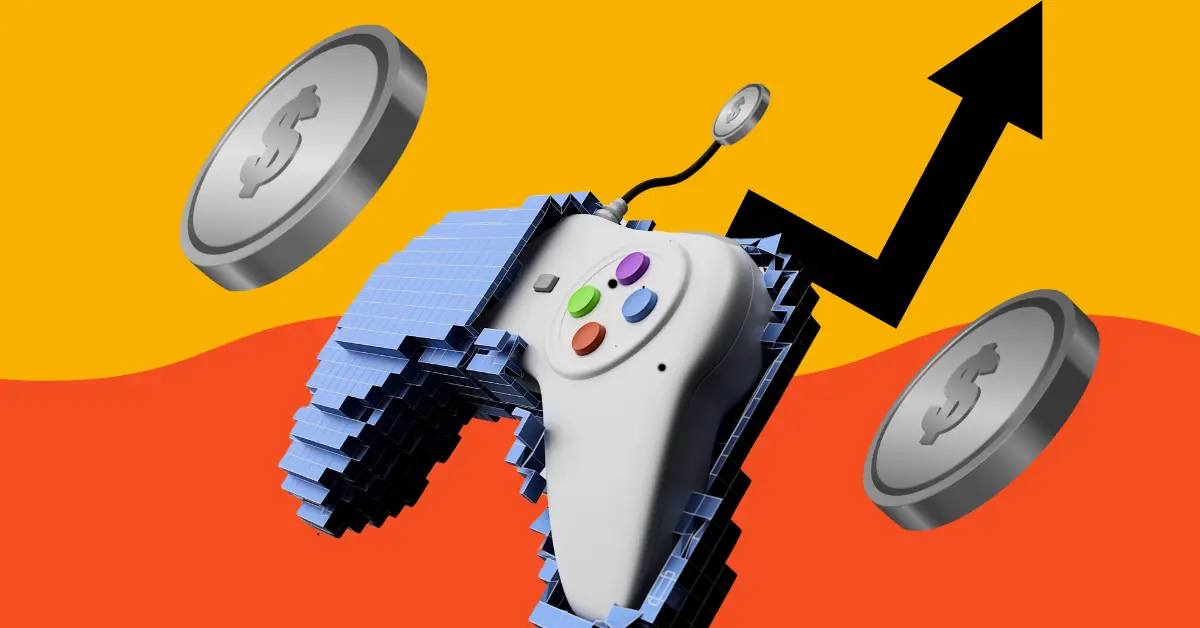User Tag List
Results 1 to 1 of 1
-
01-28-2025 #1Moderator


- Reputation
- 1
- Join Date
- Jul 2024
- Posts
- 2,629
- Thanks G/R
- 1/0
- Trade Feedback
- 0 (0%)
- Mentioned
- 0 Post(s)
- Tagged
- 0 Thread(s)
Why AI-Generated NFTs Are the Future of Crypto Gaming
Why AI-Generated NFTs Are the Future of Crypto Gaming

The convergence of artificial intelligence (AI), non-fungible tokens (NFTs), and blockchain technology is creating an unprecedented wave of innovation within the gaming industry. Crypto gaming, already a burgeoning sector, is being revolutionized by AI-generated NFTs, which are poised to redefine ownership, creativity, and engagement in virtual worlds. In this article, we will explore why AI-generated NFTs are shaping the future of crypto gaming, delving into their unique attributes, transformative potential, and the profound implications for gamers and developers alike.
The Rise of NFTs in Crypto Gaming
NFTs have transformed the gaming landscape by enabling true digital ownership of in-game assets. Unlike traditional games where players' assets are confined to a centralized ecosystem, blockchain technology empowers users to buy, sell, and trade these items across platforms. NFTs act as unique tokens that certify ownership of digital assets, such as characters, skins, weapons, or even virtual real estate.
Crypto gaming has gained immense popularity due to its play-to-earn (P2E) model, which allows players to earn tangible rewards. Games like Axie Infinity, The Sandbox, and Gods Unchained have demonstrated the potential of NFTs to merge entertainment with economic opportunity. However, as the market grows, so does the demand for innovative and diverse content—a gap that AI-generated NFTs are uniquely positioned to fill.
What Are AI-Generated NFTs?
AI-generated NFTs are digital assets created using machine learning algorithms. These algorithms analyze vast datasets to produce original content, including artwork, 3D models, and even procedurally generated game environments. The use of AI ensures that each NFT is not only unique but also tailored to specific user preferences or gameplay requirements.
Key characteristics of AI-generated NFTs include:
- Uniqueness: AI algorithms ensure that each NFT is a one-of-a-kind creation, increasing its value and appeal.
- Interactivity: AI can imbue NFTs with adaptive behaviors, allowing them to evolve based on player interaction.
- Scalability: Developers can use AI to generate vast libraries of assets quickly and cost-effectively.
- Personalization: AI can create NFTs that align with a player's preferences, enhancing their gaming experience.
The Role of AI in Enhancing Creativity and Customization
One of the most compelling aspects of AI-generated NFTs is their ability to push the boundaries of creativity. Traditionally, creating game assets requires significant human effort and artistic expertise. While this approach results in high-quality work, it is also time-consuming and resource-intensive.
AI tools like GANs (Generative Adversarial Networks) and reinforcement learning models can automate the creation of intricate and high-quality digital assets. For example:
- Procedural Generation: AI can design entire game environments or levels that adapt to gameplay styles, ensuring a fresh experience for players.
- Dynamic Characters: AI can generate characters with unique appearances, backstories, and abilities, making them more engaging.
- Customized Experiences: By analyzing a player’s gaming history or preferences, AI can create NFTs tailored specifically for them, fostering deeper emotional connections.
Moreover, AI-generated NFTs can integrate advanced animations, voices, and interactions that traditional assets cannot replicate. This level of customization and engagement significantly enhances the player experience, offering more than static assets ever could.
Transforming Game Economies with AI-Generated NFTs
Crypto gaming thrives on robust in-game economies, and AI-generated NFTs are set to make these ecosystems even more dynamic. Here’s how:
- Dynamic Scarcity: AI can create NFTs that change in value based on in-game events or player actions. For instance, a sword NFT might gain unique attributes if used to defeat a powerful boss.
- Player-Driven Markets: AI-generated NFTs empower players to co-create assets, which can then be traded in decentralized marketplaces. This fosters a sense of ownership and creativity.
- Monetization Opportunities: Developers can offer AI tools that allow players to customize or generate their NFTs for a fee, creating new revenue streams.
The Benefits for Developers
For game developers, AI-generated NFTs present several advantages:
- Cost Efficiency: Automating asset creation reduces production costs and timelines.
- Infinite Variety: AI can create limitless variations of assets, catering to diverse player preferences.
- Enhanced Engagement: Personalized NFTs increase player retention and satisfaction.
- Global Reach: Procedural generation allows for culturally relevant designs, making games more inclusive and appealing to a global audience.
Challenges and Ethical Considerations
While the potential of AI-generated NFTs is vast, there are challenges and ethical considerations to address:
- Intellectual Property (IP): Determining ownership of AI-generated content can be complex, especially when multiple parties contribute to the creation process.
- Quality Control: Ensuring that AI-generated assets meet artistic and gameplay standards is crucial.
- Sustainability: The energy consumption of blockchain and AI processes raises concerns about environmental impact.
- Inclusivity: AI models must be trained on diverse datasets to avoid cultural biases and ensure fair representation.
Real-World Examples of AI-Generated NFTs in Gaming
Several projects are already showcasing the potential of AI-generated NFTs:
- Altered State Machine (ASM): ASM combines AI and NFTs to create intelligent, adaptive agents for use in games and virtual worlds.
- Alethea AI: This platform enables users to create interactive and intelligent NFTs called iNFTs, which can perform tasks or hold conversations.
- Fableborn: A blockchain-based game that uses AI to create procedurally generated islands and assets.
These examples highlight how AI-generated NFTs can offer unique, interactive, and scalable solutions for crypto gaming.
The Road Ahead
The integration of AI-generated NFTs into crypto gaming is still in its infancy, but the possibilities are boundless. As AI models become more sophisticated and blockchain technology evolves, we can expect:
- Greater Interoperability: AI-generated NFTs that function seamlessly across multiple games and platforms.
- Immersive Experiences: AI-driven virtual worlds that adapt and evolve based on player behavior.
- Mainstream Adoption: As barriers to entry decrease, AI-generated NFTs will attract a broader audience beyond crypto enthusiasts.
Conclusion
AI-generated NFTs represent the next frontier in crypto gaming. By combining the scalability and creativity of AI with the ownership and economic opportunities of blockchain, these assets are poised to transform how we create, own, and interact with digital content. For gamers, developers, and investors, the future of gaming is not just about playing—it’s about co-creating, owning, and thriving in decentralized virtual worlds.
As the technology matures, the question is not whether AI-generated NFTs will become a cornerstone of crypto gaming but how soon they will revolutionize the industry. The fusion of AI and blockchain is more than a trend; it’s the foundation of a new digital era.
Similar Threads
-
Why Decentralized AI is the Future of Blockchain Gaming
By Seithtanveer in forum CasinoReplies: 0Last Post: 01-27-2025, 05:23 AM -
The Future of Crypto Gaming: Leveraging AI for Maximum Earnings
By Seithtanveer in forum CasinoReplies: 0Last Post: 01-26-2025, 12:30 AM -
Unlocking the Future of Crypto Games: Top AI Features in 2025
By Seithtanveer in forum CasinoReplies: 0Last Post: 01-24-2025, 04:26 AM -
Why Cloudbet Is the Future of Crypto Sports Betting
By Seithtanveer in forum CasinoReplies: 0Last Post: 01-01-2025, 04:58 AM















 Reply With Quote
Reply With Quote







